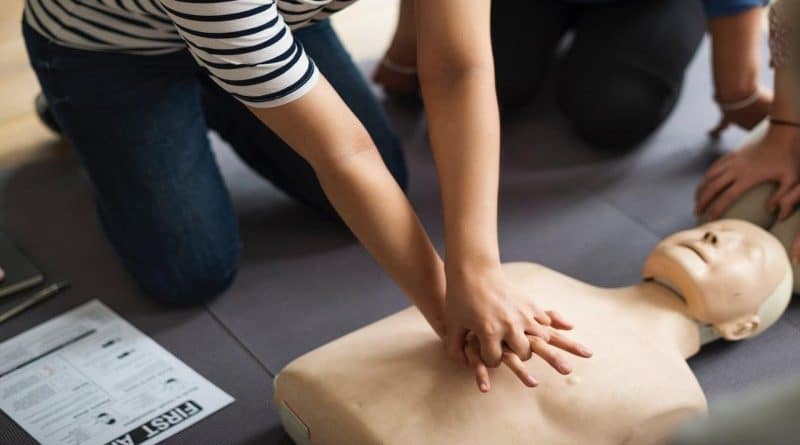Performing CPR on someone may sound easy enough. It is, however, important to know precisely what to do when someone is unconscious.
When a person suffers a cardiac arrest or any other life-threatening emergency, your immediate reaction may tremendously increase or reduce their chances of surviving. The emergency can be an accident, fire, and smoke, heart attack, or a respiratory medical problem. A first aid and CPR certification online program will equip you with the crucial skills you will need to handle an unconscious person in such emergencies.
Cardiopulmonary Resuscitation(CPR), however, is the most basic first aid technique that everyone should learn how to do comfortably and confidently. You can get hands-on knowledge about it by taking first aid and CPR certification online. This procedure is done on a person experiencing difficulty breathing or if he or she is not breathing at all. You can check their pulse and breathe first. If there is none, call for help before you start CPR.
5 Steps of CPR For Every Person
You need to follow these steps to perform CPR and try to save that person’s life:
Move the victim from any impending danger to safer ground. Lay the victim on his or her back on a firm surface. Tilt the chin upwards and let their mouth open wide to open their airways. To clear the airways, check their mouth for any solid materials and remove them. If the throat is clogged by liquids, roll them to their side to drain out the liquids. Do not start chest compressions before clearing airways.
- Position Your Hands on the Victim
Kneel beside the victim and place the heel of one of your hands on the center of their chest. Use your other hand to cover the first hand and interlock your fingers on the victim’s chest. Touch the victim with your hand’s open palm only and keep your fingers raised throughout the process. Your arms should also remain straight.
- Perform Chest Compressions
Lean slightly forward to place your shoulders directly above the chest of the victim. Use your upper body weight to press down the chest. Be careful to press only two inches depth. Release the pressure into the chest but your hands should remain in their position as you continue compressing.
Compress to a rhythm to give 100 compressions per minute. Check after every 30 compressions if the victim has started breathing on their own.
With the victim on their back, pinch his or her nose to close them tightly with one hand. Use the other one hand to support their chin. Inhale normally and hold your breath. Place your mouth on the victim’s and deliver two full breaths. Watch to see if the chest rises and falls. Continue blowing until you see the chest rise and fall.
- Combine Rescue Breaths and Chest Compressions
If the victim does not respond to rescue breaths alone, perform chest compressions at intervals. Give the victim two full breaths after every 30 chest compressions. Check for any breathing after every minute.
Otherwise, keep the cycle going until medical help arrives or the victim starts breathing.
These are must-know tips that every capable person should know. Get more information about preparing for an emergency, stocking the right supplies, preventing accidents, and other valuable lessons in a CPR first aid certification course. Join the American Health Care Academy today.






